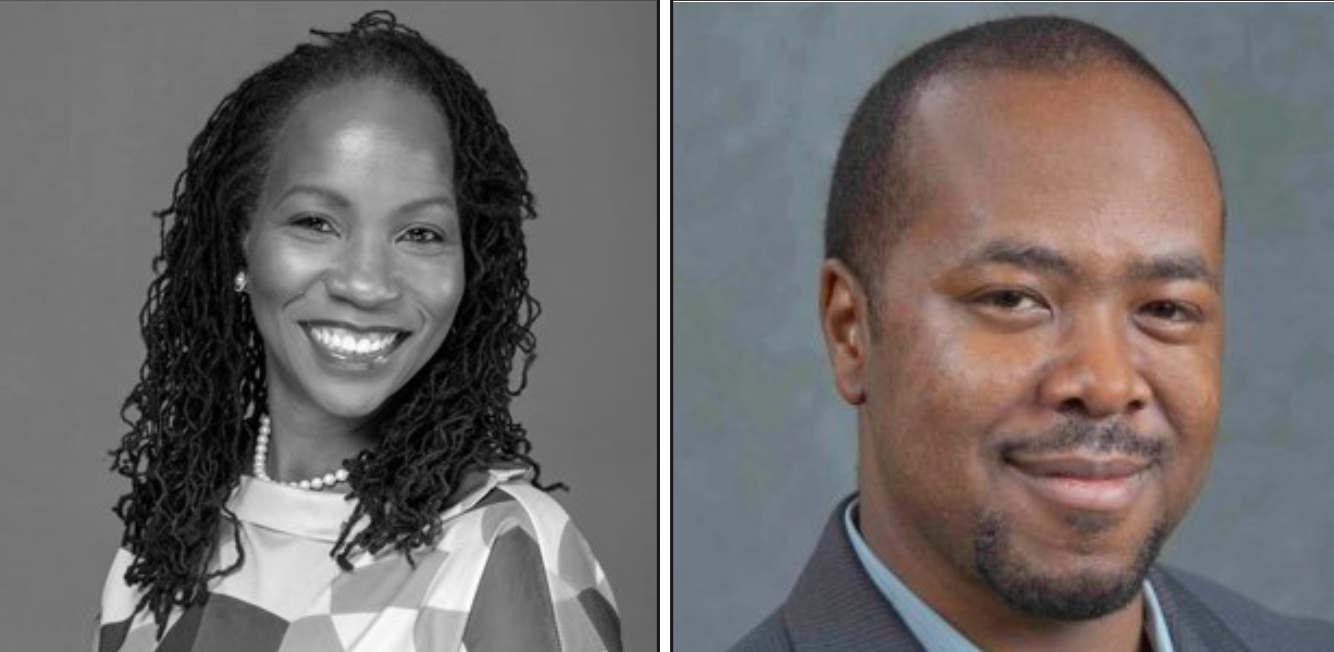Looking to History for Truth and Reconciliation
Anna Bninski ‘23
Features Editor
Pictured (left to right): Dr. Selena Cozart, UVA School of Architecture and Professor Bertrall Ross
On March 15, the UVA Law chapters of the American Constitution Society (ACS) and the National Black Law School Students Association (BLSA) hosted Dr. Selena Cozart in a conversation with Professor Bertrall Ross, the Law School’s Justice Thurgood Marshall Distinguished Professor of Law.
The well-attended event focused on questions surrounding Truth & Reconciliation Commissions, a model of restoration and justice-seeking that is most well-known in relation to post-apartheid South Africa. The publicity for the event posed these questions: What role does confronting the truth of racial injustice have in helping build a more just world? Are we able to break down oppressive structures without first understanding how they were built and maintained?
The conversation brought those questions close to home; Dr. Cozart has for years been an active participant in the University and Community Action for Racial Equity (UCARE) program at UVA, which has been instrumental in UVA’s recognition and accountability in relation to its unpaid, underpaid, and enslaved laborers. Dr. Cozart’s wide-ranging knowledge of and engagement with the Charlottesville community includes work with Cultivate Charlottesville, an organization that engages youth in building a healthy and just food system, Piedmont Environmental Council, the City of Charlottesville, and the University of Virginia.
The movement toward a potential Truth & Reconciliation body in Charlottesville, Dr. Cozart explained, was “birthed out of community members going to other sites, places and spaces of civil rights battles” in the wake of the events of August 11 and 12, 2017. Some of these communities had gone through Truth & Reconciliation processes, and the pilgrims from Charlottesville were especially impressed by efforts in Greensboro, N.C., to get to the truth of the city’s history during the mid-1970s. So in 2018, some people found themselves asking, “Is there something we can do locally here in Charlottesville?” Dr. Cozart noted that while Charlottesville is far from having its own Truth & Reconciliation Commission, community members are looking to South Africa and to Greensboro for models of how the process has worked.
Movement toward truth and reconciliation, Dr. Cozart emphasized, doesn’t come from an “external evaluation that says ‘You need a Truth & Reconciliation process,’” but instead comes from within the community. “Any community can be that community, but you need people who will get at the truth from a variety of perspectives.” Accordingly, the conversation in Charlottesville has open invitations to those who are not necessarily sympathetic to the goal of assessing the impact of the institution of slavery on American history, government, and society.
Professor Ross made an appearance via Zoom. His remarks and ability to really get into dialogue with Dr. Cozart were sadly truncated by technical difficulties. (He was speaking from Germany, and was hampered both by Europe’s refusal to adopt Daylight Savings Time and by unreliable train Wi-Fi.) However, in the short time that he was able to speak to the gathering. Professor Ross also emphasized the truth aspect: “Truth & Reconciliation requires engagement with inequality, the sources of it, the conditions that have led to current racial inequities, which has been called critical race theory … but it’s about understanding our history.” Education should include this aspect of history from early stages up through law school, Professor Ross stated, but noted that how it is taught is important. “Teachers need training to do it effectively.”
Dr. Cozart agreed about the need to educate educators. “Having expertise in the ability to teach is really important . . . I have seen conversations that lean toward creating a sense of guilt and shame, rather than creating understanding” of the history.
In response to an audience question about tension between truth-focused justice and a “right to be forgotten,” Dr. Cozart observed that she wouldn’t like to have a record of everything she thought at age fifteen. More seriously, she spoke to the importance of having some record of the past, and non-idealized assessment of historical figures, without moving into the nuance-free realm of “cancel culture.”
She also spoke to the use of historical records in the Charlottesville community’s efforts to document the effects of slavery. “We do not have the people who initially experienced the harm, but we do have their descendants,” and records that indicate the impact act of slavery on a wider level. This includes looking at the history of redlining in Charlottesville and looking at the work performed by enslaved people. “If that had been wage labor, how much would they have been owed?”
The conversation covered many more topics than this article cannot adequately convey, including the arc of history, local vs. national Truth & Reconciliation efforts, the necessity of facing “icky stuff,” the recent removal of Confederate statues in Charlottesville, and more.
“We wanted people to learn more about their local community: Charlottesville has been our host for three years,” said Tommy Cerja ’24, Social Action Chair for BLSA. The event certainly checked that box.
“The goal of the event was to think critically about our privilege and the conversations that aren’t happening,” added outgoing ACS president Max Larson ’23 (who had dealt heroically with the worst Zoom could throw at her). “We hope to hear more from Professor Ross next time. His work really is profound regarding race, democracy, and marginalized communities.”
---
amb6ag@virginia.edu

